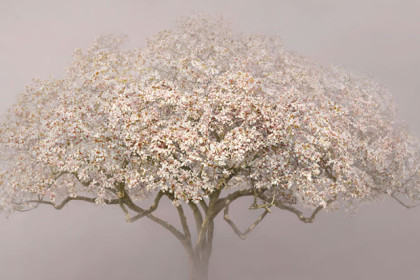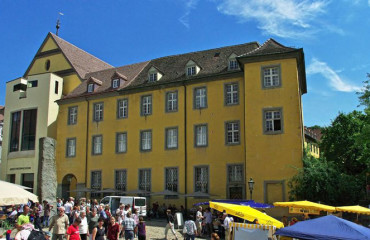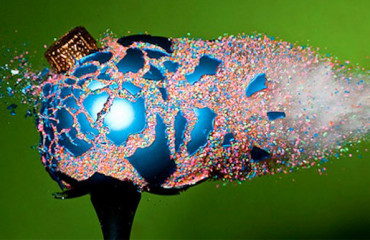
Dark funds or neutral blacks of the night or smoky fog from which emerge quiet and muffled pictures by Irene Kung. The artist, Swiss but settled in Italy and trained as a painter, recently chose to use photography as an expressive medium, and her works will inevitably keep track of a pictorial than for this to be supplanted by a different technique.
The latest project in order of time has as its protagonists the trees: the perfect shots to hit a concrete sense of poetry that explodes in front of the visitor, flowing from the light foliage of the flowering magnolia or the Egyptian golden palms that open up like fireworks, blowing energy from the leaves shaken by the wind, that dazzles with golden luminescence of the leaves of the mulberry and ginko tree and reassures with the huge, motionless trunk, of Migliarino oak. At the center of vision, with nothing around to disturb the absolute essence of the plant, the plants become vehicles for a totalizing aesthetic experience, that absorbs the eyes and throws them into an imaginary world where everything can be realistic and where thought can expand indefinitely.
Not different in setting is another rich series of photographs that explores the cities and their monuments, architectural buildings that are buildings, but above all symbols: in this case construction protagonists – as if they were living beings – emerge from warm and enveloping obscurity, they seem cropped and repositioned outside of time and space, in absence of people and foreign elements. Many, looking at these pictures, they come closer to the dream-like visions, and in Irene Kung’s work, dream is certainly a basic factor. It allows you to get closer to mysterious contents of the framing through lens, and as she declares, “Daydreaming you become able to look around the corner. You can not think if you can not imagine”. The monuments that the photographer “knows how to look” assume new meanings, they are perceived through an interpretation that gives them value, which enhances geometry as much as the detail, which brings them closer to a personal feeling full of symbolic references, and finally places them on a fine line between reality and vision.
And yet, animals. Domestic or exotic, motionless in a perfect shot that sums up all their movement, on the one hand they seem living trophies, on the other loving studies on nature, on the looks of being that are other than human and on the tactile sense of softness of their surfaces.
 English
English  Italiano
Italiano 



